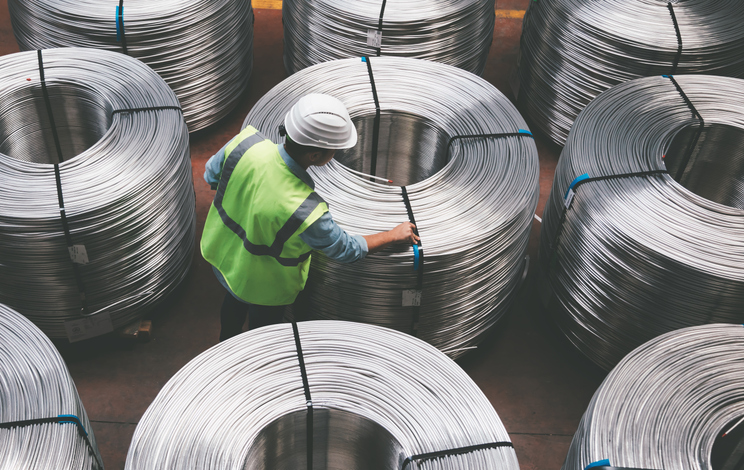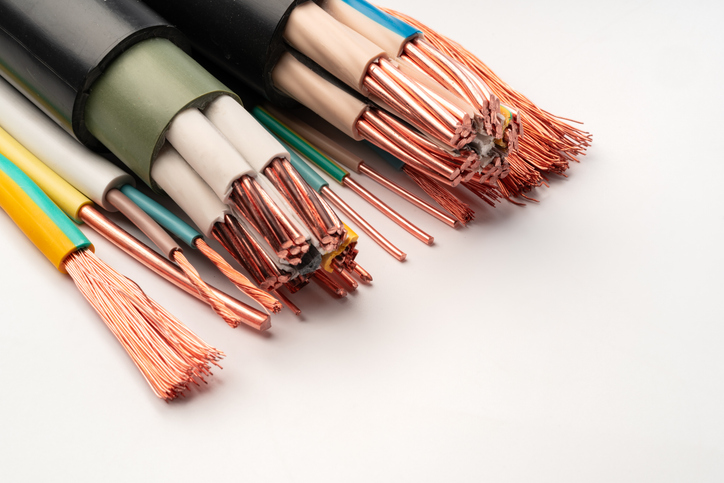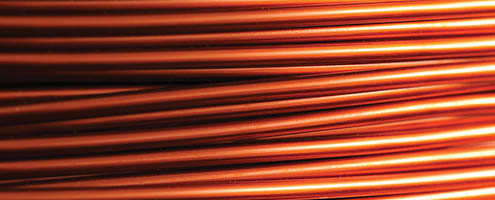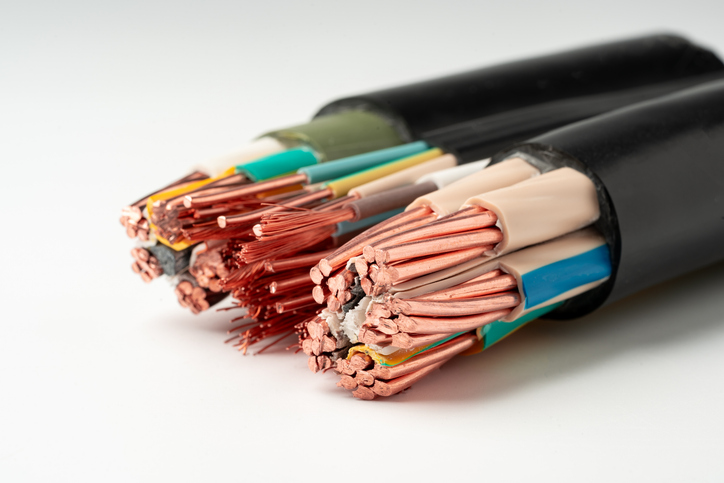Electrical Wire: THHN vs THWN vs Romex vs XHHW

In the world of building wire, there are several common choices available that at first appear quite similar. Here we examine some of the most common of them; THHN, THWN, Romex and XHHW. This guide will help explain the differences and make your choice of wire more straightforward.
What is THHN Wire?
Thermoplastic High Heat-resistant Nylon-coated wire (THHN) is a single conductor wire with PVC insulation and a nylon jacket.
What is THHN Wire Used For?
It’s commonly used in conduit as electrical wire for buildings. Its heat and oil resistance makes THHN a suitable wire for appliances and machine tools.
What is THWN Wire?
THWN is essentially the same as THHN and the two are often used interchangeably. THWN is also a single conductor wire with PVC insulation and a nylon jacket.
THHN vs THWN Wire
The key difference is the “W” in the name indicates water-resistance. THWN is rated for temperatures up to 90°C in wet conditions vs 75°C for THHN.
THHN | THWN | THWN-2 |
T = Thermoplastic | T = Thermoplastic | T = Thermoplastic |
HH = High Heat Resistance | H = Heat Resistance W = Water Resistance | H = Heat Resistance W = Water Resistance |
N = Nylon Coating | N = Nylon Coating | N = Nylon Coating |
Temperature Rating = 90°C (Dry) | Temperature Rating = 90°C (Dry), 75°C (Wet) | Temperature Rating = 90°C (Dry & Wet) |
What is Romex Wire?
When we think of Romex, we most commonly are referring to the trade name for Thermoplastic-Sheathed Cable (TPS).
What is Romex Wire Used For?
Romex is often used as residential wiring for electrical circuits and lighting. We generally think of a specific type of Romex, which is known for its nonmetallic sheathing and primary use as branch wiring. This is referred to as Romex NM-B.
THHN vs Romex Wire
Romex is essentially multiple THHN wires together in a single PVC sheathing. There are some very critical differences when it comes to code compliance. Romex (or other brands of NM-B cable) is not permitted in commercial applications or residences taller than three stories. Romex may also present some challenges for installation with conduit as larger conduit may be required compared to the same gauge of THHN. Some communities do not allow the use of Romex, so be sure to check with local codes before using.
What is XHHW Wire?
Cross-Linked Polyethylene High Heat-resistant Water-resistant Wire (mercifully shorthanded as XHHW) is a single conductor electrical wire used primarily for commercial and industrial building applications.
XHHW vs THHN Wire
'The “X” in XHHW (generally abbreviated as XPLE) is an insulation material that is more resistant to wet environments than THHN (90°C vs 75°C). It’s also a thicker insulation that can better protect against breakdown when exposed to extreme environments.
XHHW Vs. THWN Wire
The primary distinctions between XHHW and THWN wires include differences in their insulation materials and application suitability. XHHW wire features cross-linked polyethylene (XLPE) insulation, which enhances its thermal stability and chemical resistance, allowing it to operate effectively at temperatures up to 90°C in both wet and dry conditions.
THWN wire utilizes a base of thermoplastic insulation coated with nylon. THWN is rated for operation at 90°C in dry conditions but is limited to 75°C in wet conditions. The nylon coating not only protects against physical damage but also provides a reliable barrier against certain chemical exposures. XHHW is generally more suited for environments with higher temperatures and potential chemical exposures, whereas THWN is preferred in scenarios where physical durability and flexibility are prioritized.
XHHW Vs. XHHW-2
XHHW and XHHW-2 wires both employ cross-linked polyethylene (XLPE) insulation but differ primarily in their temperature ratings and application scopes. XHHW is rated for operation at up to 90°C in both wet and dry conditions, making it suitable for general wiring tasks within conduits or raceways. XHHW-2, an enhanced version, extends this functionality with a higher temperature rating of up to 150°C in dry conditions while maintaining the 90°C rating in wet conditions. This increased temperature resilience allows XHHW-2 to be used in more demanding industrial applications and environments that experience higher ambient temperatures.
Need support in finding the right cable solution for your application?
Contact IEWC to connect with a member of our team!
Frequently Asked Questions
THHN stands for Thermoplastic High Heat-resistant Nylon-coated wire, a single conductor used primarily in conduit and raceway applications for building wiring where high heat and durability are required.
THHN (Thermoplastic High Heat-resistant Nylon-coated) and THWN (Thermoplastic Heat-and-Water-resistant Nylon) are individual conductors rated for dry and wet locations, respectively. Romex (NM-B) is a nonmetallic sheathed cable for residential branch circuits in dry locations. XHHW (Cross-linked High-Heat-resistant Water-resistant) offers higher thermal and chemical resistance and is suitable for wet, industrial, and outdoor applications.
Choose THHN when wiring in conduit or raceway in dry conditions and cost-efficiency is key. In wet or damp environments, THWN or XHHW is preferable. XHHW offers superior thermal rating and chemical resistance, ideal for industrial or high-stress applications.
No. Romex (NM-B) is only rated for dry, indoor residential environments. For wet locations or outdoor applications, use THWN or XHHW conductors which are specifically designed and rated for moisture resistance.
Generally, yes. Many conductors are dual-rated as THHN/THWN, interchangeable in both dry and wet applications. Always verify the marking and NEC compliance before substitution.
- THHN is rated up to 90 °C in dry locations (600 V max)
- THWN up to 75 °C in wet locations (600 V)
- XHHW-2 typically rated 90 °C in both dry and wet (600 V)
- NM-B (Romex) rated 90 °C for conductor but limited to 60 °C terminations and 600 V in dry residential applications only.
Related Resources

Application & Selection Gide for Standard Product
Read more on the typical applications for standard wire and cable products.Read More
How to Choose the Right Wire or Cable
In selecting a wire or cable for an application, several factors should be considered. Learn More
Selecting a Conductor
Even in the design of a simple single insulated wire many factors must be considered, including physical properties of the conductorLearn More


